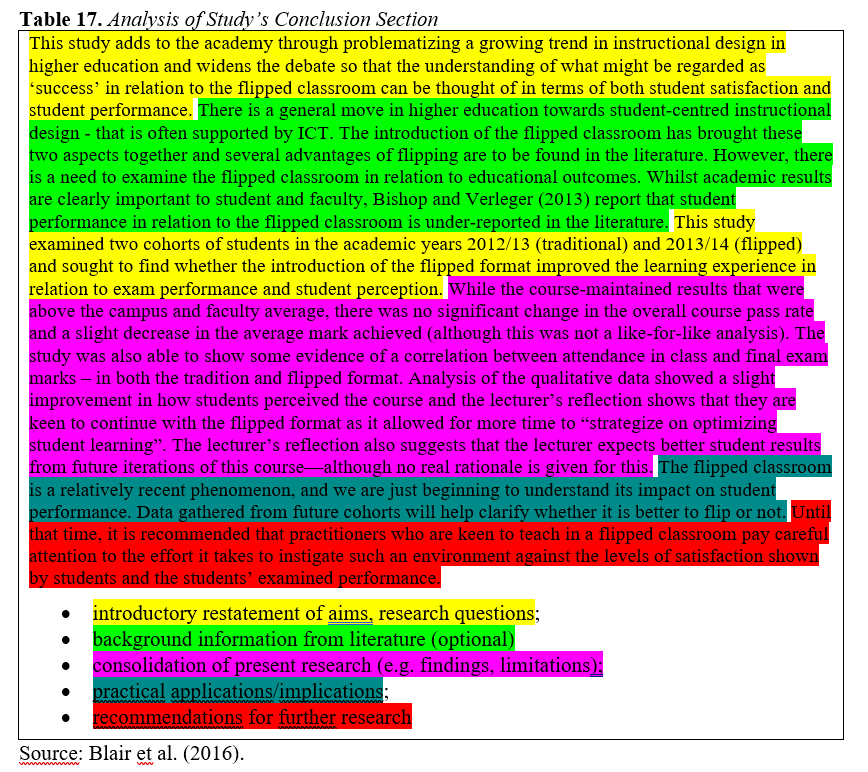Information

Conclusions should succinctly summarize the main findings, directly answering the research questions posed at the study's outset (Creswell & Creswell, 2017). The conclusion section is the section that reads the entire article and relates the conceptual and theoretical framework of the article to the themes emerging in the discussion section. This section should be of a nature that can be understood, interpreted, and applied in practice by researchers interested in the field.
According to Thompson (2005) conclusion sections should include:
Some researchers may prefer to write the recommendation and implications as separate headings, or academic journals or institutes may request such a way of writing. If they write separate, recommendation section can include actionable steps for practitioners and policymakers and indicate the broader impact of the study (Smith, 2010). In implications the researcher can describe his experiences during the research process and reveal the lessons to be learned from these experiences. On the other hand, it can emphasize the research of new research findings added to the theoretical framework in the field and the issues that are felt to be lacking and that are thought to need to be added. In Table 17, Blair et. al. (2016)’s conclusion section analyzed in terms of its main parts with different colors.

This table analyzes the conclusion of Blair et al.'s (2016) study. Results include background information from the literature while restating the purpose of the study and research questions. It includes consolidation of existing research, findings, and limitations, and discusses practical applications or implications. It also provides suggestions for future research. The table provides a guide for structuring and understanding the results of the study. As a result, the conclusion of a scientific article/writing summarizes the main findings of the research and emphasizes the importance of these findings. It also identifies the limitations of the study, offers suggestions for future research, and indicates the study's unique contributions to the field. Results are conveyed clearly and concisely, avoiding complex language or unnecessary details. This section helps the reader understand the importance of the research and grasp the main message of the study.